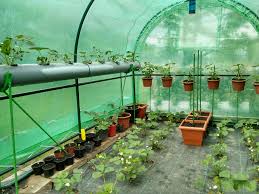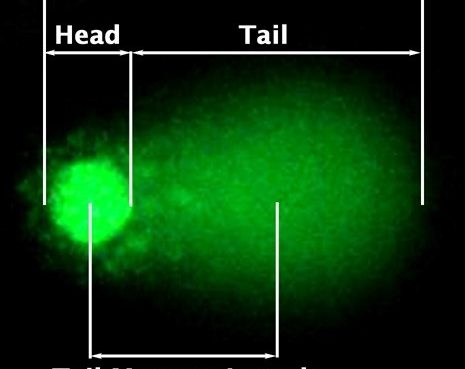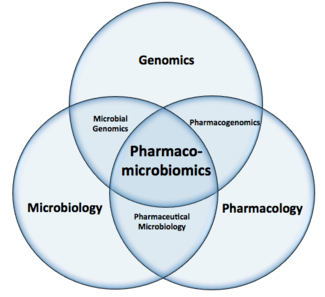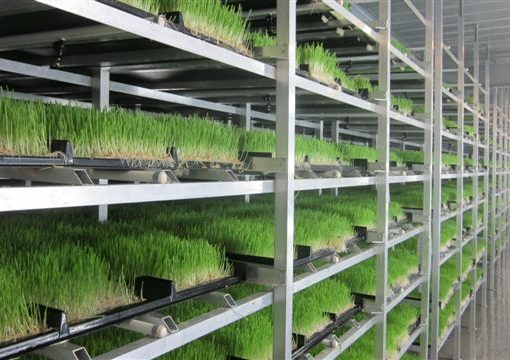Dipjyoti Bharali
Ph.D. Research Scholar, Dept. of Agricultural Economics and Farm Management
College of Agriculture, Assam Agricultural University, Jorhat-785013
Corresponding e-mail: bharali.dipjyoti93@gmail.com
ABSTRACT
Agriculture and forestry are significant contributors to greenhouse gas (GHG) emissions, particularly CO2, CH4, and N2O, which exacerbate global warming (Rehman et al., 2020). Northeast India, comprising states like Assam, Meghalaya, and Arunachal Pradesh, is highly sensitive to these climatic variations, experiencing erratic rainfall, prolonged droughts, and unseasonal floods that threaten agricultural productivity and economic stability. This study utilizes secondary data from Assam Agricultural University’s meteorological department and various governmental and private sources to analyse the impact of climate change on agriculture in this region. Key findings indicate that increasing temperatures and irregular rainfall patterns are reducing crop yields, particularly of rice, the staple crop. To mitigate these impacts, sustainable agricultural practices are essential. Strategies such as improved manure management through biogas production and composting, sustainable rice cultivation with alternate wetting and drying (AWD) and direct-seeded rice, conservation tillage, and the use of cover crops can significantly reduce GHG emissions and enhance soil health. Additionally, crop diversification, particularly promoting millet cultivation, and implementing integrated farming systems (IFS) can improve resilience and food security. Policy support, including financial incentives, training programs, and research funding, is crucial to facilitate these practices. This research highlights the dual role of agriculture as both a contributor to and a potential mitigator of climate change, emphasizing the need for comprehensive strategies to build a sustainable agricultural framework in Northeast India.
Introduction
Climate change, driven by human activities, is among the greatest threats to the Earth’s ecosystems. According to the Intergovernmental Panel on Climate Change (IPCC), human emissions of greenhouse gases (GHGs), primarily carbon dioxide (CO2) from burning fossil fuels, cement production, and land-use changes, are accelerating global temperatures at an alarming rate (Anwar et al., 2019). Agriculture and forestry contribute significantly to these emissions, releasing CO2, methane (CH4), and nitrous oxide (N2O). The consequences of these emissions are especially evident in vulnerable regions like Northeast India, where the livelihoods of millions depend on agriculture. Northeast India, comprising states such as Assam, Meghalaya, Arunachal Pradesh, and others, is a region highly sensitive to climatic variations. This area is witnessing dramatic shifts in weather patterns including erratic rainfall, prolonged droughts, and unseasonal floods. Such changes directly impact agriculture, threatening food security and the economic stability of the region. Secondary data from Assam Agricultural University’s meteorological department, along with research from government and private sources, reveal that these climatic shifts are disrupting traditional farming practices. The data indicates that increasing temperatures and irregular rainfall patterns are leading to reduced crop yields and increased pest infestations. Rice, the staple crop in this region, is particularly vulnerable, with yields dropping due to both water scarcity and excessive flooding.
Sources of Agricultural GHG Emissions:
- Carbon Dioxide (CO2)
- Deforestation and Land Use Change: When forests are cleared for agricultural use, the carbon stored in trees is released into the atmosphere as CO2. This is particularly significant in tropical regions where vast tracts of forest are converted into farmland (Smith et al., 2014).
- Soil Management: Conventional tillage practices disrupt soil structure and release CO2 stored in soil organic matter.
- Methane (CH4)
- Enteric Fermentation: Ruminant livestock such as cattle, sheep, and goats produce methane during digestion. This process, known as enteric fermentation, is responsible for a significant portion of methane emissions from agriculture.
- Rice Paddy Fields: Waterlogged conditions in rice paddies create anaerobic environments that are ideal for methane-producing microbes (methanogens). Rice cultivation is a major source of agricultural methane emissions, especially in regions like Asia where rice is a staple crop.
- Nitrous Oxide (N2O)
- Fertilizer Application: The use of nitrogen-based fertilizers on agricultural fields leads to the production of nitrous oxide through microbial processes in the soil, particularly nitrification and denitrification.
- Manure Management: The storage and handling of animal manure also produce nitrous oxide, particularly when manure is managed in systems that promote anaerobic conditions
Mitigation Strategies
Agriculture is both a victim and a perpetrator of climate change. The sector is a major source of GHGs, which are primarily emitted through activities like ruminant farming, rice cultivation, soil management, and burning of agricultural residues. Methane emissions from rice paddies and livestock, along with nitrous oxide from fertilized soils, significantly contribute to the region’s carbon footprint.
However, agriculture also holds the potential to mitigate these emissions. For example, studies have shown that AWD in rice paddies can reduce methane emissions by up to 48% compared to continuous flooding (Samoy et al., 2019). Similarly, biogas digesters not only reduce methane emissions but also provide renewable energy and improve nutrient recycling on farms. Agriculture has the potential not only to reduce its GHG emissions but also to sequester carbon, thereby mitigating climate change. Here are some strategies:
Improved Manure Management
- Biogas Production: Treating animal waste in biogas digesters can capture methane for use as an energy source, thereby reducing methane emissions from manure. The remaining digestate can be used as a nutrient-rich fertilizer, improving soil health and reducing the need for synthetic fertilizers (Kovacic et al., 2022).
- Composting: Proper composting of manure can minimize methane and nitrous oxide emissions and produce valuable organic fertilizer.
Sustainable Rice Cultivation
- Alternate Wetting and Drying (AWD): Implementing AWD in rice paddies reduces the period of waterlogged conditions, thereby reducing methane emissions. This practice involves periodically draining the fields, which disrupts the anaerobic environment needed for methanogen activity (Sriphirom et al., 2020).
- Direct-Seeded Rice: Growing rice from seeds directly sown in the field (instead of transplanting seedlings) reduces water use and methane emissions (Pathak et al., 2013).
Soil Management Practices
- Conservation Tillage: Reducing the frequency and intensity of tillage helps maintain soil structure and increases carbon sequestration in soil organic matter (Naresh et al., 2017).
- Cover Crops: Planting cover crops during off-seasons improves soil health, prevents erosion, and enhances soil carbon storage.
Improved Fertilizer Use
- Precision Agriculture: Using technology to apply fertilizers more efficiently reduces the excess application of nitrogen, thereby reducing nitrous oxide emissions (Bongiovanni and Lowenberg, 2004).
- Legume Intercropping: Growing legumes alongside other crops can enhance nitrogen fixation in the soil, reducing the need for synthetic fertilizers (Jensen et al., 2020).
Crop Diversification
- Millet Cultivation: Promoting the cultivation of millets, which are hardy and drought-resistant, can improve food security and resilience to climate change while requiring fewer inputs and producing lower GHG emissions compared to traditional staple crops like rice and wheat (Saxena et al., 2018).
Conclusion
Northeast India faces significant challenges due to climate change, threatening the region’s agricultural productivity and livelihoods. The agricultural sector, while contributing to greenhouse gas emissions, also holds potential for mitigating climate change impacts. Implementing sustainable practices such as biogas production, conservation tillage, and promoting millet cultivation can reduce emissions and enhance carbon sequestration. Strategies like alternate wetting and drying in rice cultivation, and direct-seeded rice can improve water management and reduce methane emissions. Additionally, soil management practices like conservation tillage and cover cropping contribute to soil health and carbon storage. Policy support, increased research funding, and strengthened extension services are crucial for successful implementation of these practices. By adopting these measures, Northeast India can build resilience to climate change, ensure food security, and foster sustainable agricultural systems for future generations.
References:
Anwar, M.N.; Iftikhar, M.; Khush Bakhat, B.; Sohail, N.F.; Baqar, M.; Yasir, A. and Nizami, A.S. (2019). In: Inamuddin, Asiri, A. and Lichtfouse, E. (eds.), Sources of carbon dioxide and environmental Issues. Sustainable Agriculture Reviews 37: Carbon Sequestration Vol. 1, Introduction and Biochemical Methods, 13-36. Springer, Cham. https://doi.org/10.1007/978-3-030-29298-0_2.
Bongiovanni, R. and Lowenberg-DeBoer, J. (2004). Precision agriculture and sustainability. Precision agriculture, 5: 359-387.
Jensen, E.S.; Carlsson, G. and Hauggaard-Nielsen, H. (2020). Intercropping of grain legumes and cereals improves the use of soil N resources and reduces the requirement for synthetic fertilizer N: A global-scale analysis. Agronomy for Sustainable Development, 40(1): 5.
Kovacic, D.; Loncaric, Z.; Jovic, J.; Samac, D.; Popovic, B. and Tisma, M. (2022). Digestate management and processing practices: a review. Applied Sciences, 12(18): 9216.
Naresh, R.K.; Timsina, J.; Bhaskar, S.; Gupta, R.K.; Singh, A.K.; Dhaliwal, S.S., Rathore, R.S.; Kumar, V.; Singh, P.P.; Singh, S.; Tyagi, S.; Kumar, S. and Mahajan, N.C. (2017). Effects of tillage, residue and nutrient management on soil organic carbon dynamics and its fractions, soil aggregate stability and soil carbon sequestration: A review. EC Nutrition, 12(2): 53-80.
Pathak, H.; Sankhyan, S.; Dubey, D.S.; Bhatia, A. and Jain, N. (2013). Dry direct seeding of rice for mitigating greenhouse gas emission: field experimentation and simulation. Paddy and Water Environment, 11: 593-601.
Rehman, A.; Ma, H.; Irfan, M. and Ahmad, M. (2020). Does carbon dioxide, methane, nitrous oxide, and GHG emissions influence the agriculture? Evidence from China. Environmental Science and Pollution Research, 27: 28768-28779.
Samoy-Pascual, K.; B. Sibayan, E.; S. Grospe, F.; T. Remocal, A.; T-Padre, A.; Tokida, T. and Minamikawa, K. (2019). Is alternate wetting and drying irrigation technique enough to reduce methane emission from a tropical rice paddy? Soil Science and Plant Nutrition, 65(2): 203-207.
Saxena, R.; Vanga, S.K.; Wang, J.; Orsat, V. and Raghavan, V. (2018). Millets for food security in the context of climate change: A review. Sustainability, 10(7): 2228.
Smith, P.; Bustamante, M.; Ahammad, H.; Clark, H.; Dong, H.; Elsiddig, E.A.; … and Bolwig, S. (2014). Agriculture, forestry and other land use (AFOLU). In Climate change 2014: mitigation of climate change. Contribution of Working Group III to the Fifth Assessment Report of the Intergovernmental Panel on Climate Change (pp. 811-922). Cambridge University Press.
Sriphirom, P.; Chidthaisong, A.; Yagi, K.; Tripetchkul, S. and Towprayoon, S. (2020). Evaluation of biochar applications combined with alternate wetting and drying (AWD) water management in rice field as a methane mitigation option for farmers’ adoption. Soil Science and Plant Nutrition, 66(1): 235-246.




